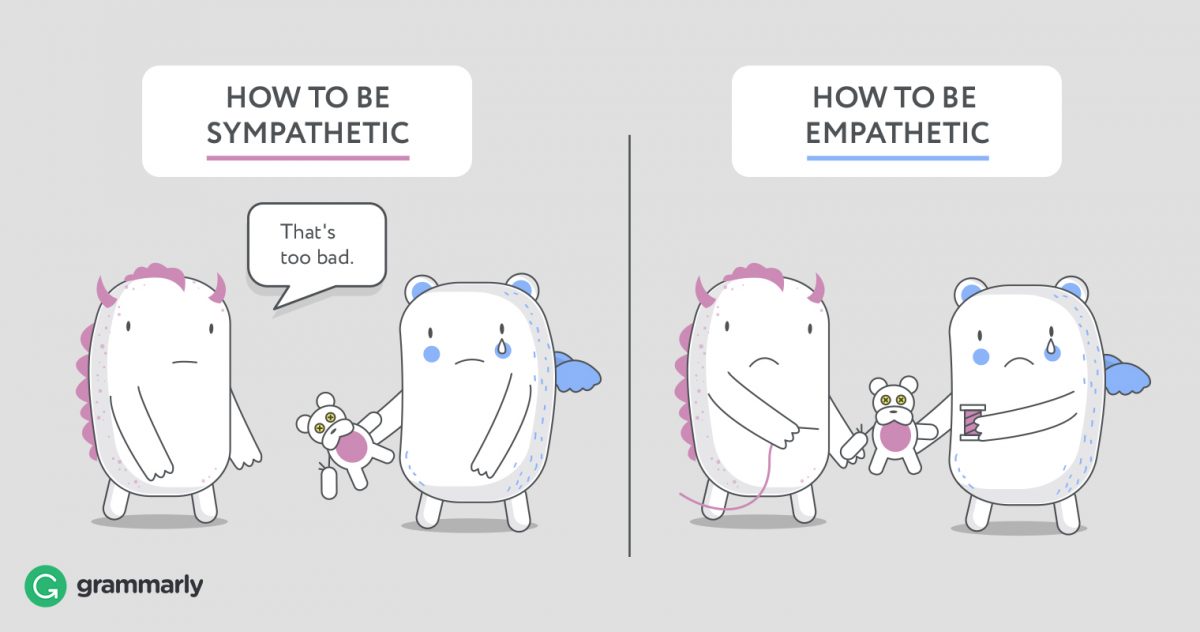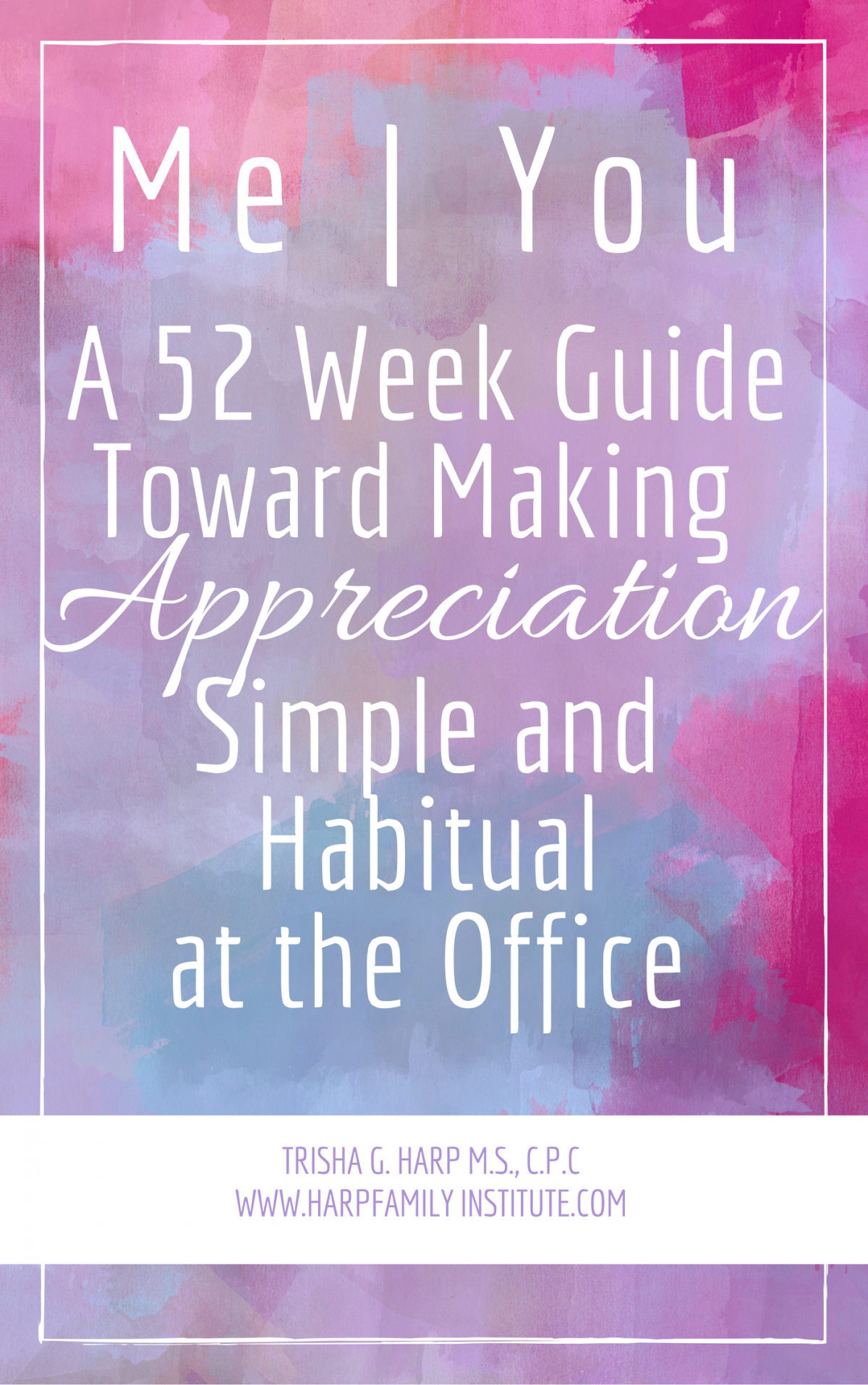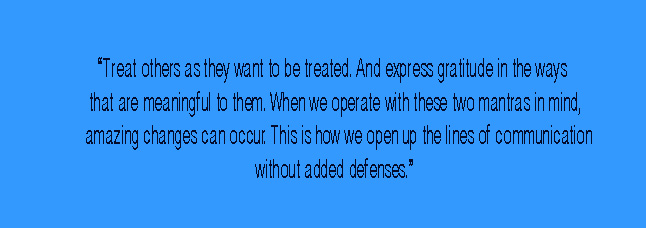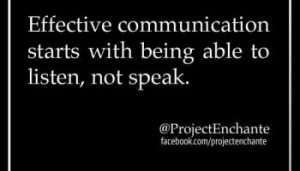I recently opted to write a chapter for a collaborative book written by a group of coaches. Depending on my thoughts about the other chapters, I may, or may not choose to promote it, but in the meantime, here is a peek at my chapter.
***********************************************
Like so many others, I was taught the Golden Rule when I was growing up. The meaning of “Do unto other as you would have them do unto you” seemed clear enough: treat others as you would want to be treated. So I did. I tried to treat others with the kindness and respect that I sought from others, as the Golden Rule insisted. But after a while, I also noticed a big problem with this popular guiding principle. Often, what I was doing for others didn’t match up with what I would want if the situation were reversed. I don’t particularly care for Thank You notes and I don’t need more trinkets from people, but according to the Golden Rule, that would mean I shouldn’t give them to others, either. But the truth is other people really value them.
Sure enough, after over a decade of doing my own proprietary research, collecting data, interviewing people, coaching men, women, and couples, one thing has become crystal clear: the Golden Rule isn’t always golden. Quite the opposite. If we really want to give to others, we shouldn’t treat them as we want to be treated. We should treat them as they want to be treated.
I like to call this the Platinum Rule! As individuals, we experience and receive love and appreciation in our own unique ways. What is meaningful to one person might not impact another in the same way. In my research on how marriage and entrepreneurship intertwine, the disconnect that kept cropping up between the couples I researched was due to the fact that they hadn’t communicated enough with one another. They had not discussed what they wanted and how they would like to be treated.
Several years ago, my husband started talking to me about one of his companies. I launched in, giving suggestions and trying to solve his issues, but I began to notice that the more I spoke, the less he shared. I realized that I didn’t really know what he wanted from me. Did he just want to vent? Or did he want me to be a sounding board for him to think through a dilemma that was facing him? So I asked him, “Do you want my feedback or would you prefer I just listen?” Treat others as they want to be treated. At that moment, he just needed an ear he could trust. This was a huge breakthrough for us.
A few years after that, we were working out weekend parenting agreements for our two young children. We had agreed that, on weekends, one of us would take the boys and allow the other to sleep in. Like clockwork, on my husband’s mornings, he would get the boys dressed and they’d leave the house together. I assumed he did so because he had trouble entertaining them at home. I was different: on my mornings, I kept the boys occupied at home and away from my husband.
One day, he came to me, somewhat annoyed. “Why don’t you take the boys out of the house like I do for you?” he asked. I was surprised. I told him I didn’t need him to take the boys out for me. I used earplugs when I was sleeping and their noise didn’t bother me. But he couldn’t fully relax and fall asleep when the kids were around. Instead, he was trying to lead by example and get me to take the boys out of the house. So we changed our habits and started to give each other what the other wanted. There it is again: Treat others as they want to be treated.
In the movie Parenthood, there’s a scene with Steve Martin that has stuck with me. He’s sitting in the audience, watching his child on stage, and all he can think about is how his life is like a roller coaster. The scene sticks with me because I have often felt like my own life was a lot like a roller coaster ride. I’ve spent a lot of time wondering if there is anything I can do to ensure that the individuals I hold most dear are still on the ride with me at the end.
Take a moment and think about a roller coaster that you love. One that has twists, turns, upside down parts, and hills that make your stomach drop! Now think about your life. Who is the single most important person you want to share your life’s journey with right now. It could be a spouse, a parent, a best friend, a sibling, or a child. Imagine that individual sitting next to you in a roller coaster cart. Now imagine you’re going up the hill together. Inching up closer and closer to the top. Anxiety and anticipation are escalating. Click after click, you start to wonder if this will be the best roller coaster you’ve ever experienced. Suddenly your companion puts their hand in front of your eyes and, no matter what you do, they won’t remove it.
How do you feel? Angry? Scared? Resentful? Anxious? Frustrated? Will you want to go on another ride with your companion after this experience? Maybe not.
Yet this is exactly how others feel when you don’t share with them what you’re thinking, feeling, or experiencing in your life. They are essentially riding a roller coaster blind—and they have no clue how to change their circumstances. As a result, the lack of communication creates dissonance between the two of you and robs you of the potential for deeper connection and joy.
I came across a podcast that suggested that one person’s failure to show gratitude can be felt as ingratitude by the other person. I call it the Gratitude Rule! When I look back on my own life, I can see that all those times that I didn’t call a friend, write a Thank You note, or buy a trinket, I had no intention to express ingratitude for those people’s roles in my life. But if this sentiment is correct, that is what was unintentionally conveyed and I can no longer be surprised that those relationships suffered. By not communicating, I had, in effect, put my hand over their eyes on our roller coaster ride through life together.
After decades of analysis, I have come to this conclusion: by combining the Gratitude Rule with the Platinum Rule, I believe we can enhance our connections and relationships with one another like never before.
In my seminars and coaching sessions, I give the following exercise: Choose two people in your personal life and two people at work. Then, ask those individuals to write down four things that you can do to show them how much they mean to you or how much you appreciate them. Then commit to doing those four things over the next month or two. After two months have passed, ask them how your actions made them feel and if they have any new suggestions for you. From this, you’ll gain valuable insight into how those around you want to be treated and how they receive acts of appreciation. And you’ll also be showing gratitude in the ways that mean the most to them.
Yet some people feel that it’s less meaningful for them if they have to ask someone for what they want, rather than the other person figuring it out on their own. If that’s you, think of it this way: if something is meaningful enough to you, it will feel wonderful no matter what, even if you had to ask for it.
That said, how you ask also matters. It’s best to come from a place of love and genuineness. Your words should not be dripping with bitterness, doubt, or contention. For example, perhaps you’d like to get some help with the laundry on a regular basis. It could easily backfire if you have attitude when you ask, “I wonder if you could help with the laundry once in a while so I don’t always have to do it.” Instead, try “You know, the part about doing the laundry that I dislike the most is __________. Could you start helping me with that? It would really make me happy and would help a lot.” Part of what makes the Platinum Rule work so well is that it gives you a lot of latitude to be specific about exactly what you want or need to be happier. The more specific you are, the more those around you will know what to do to make you happy.
But what if you don’t know what you want? Trial and error is a wonderful thing. We are all dynamic human beings and change our minds regularly. If something doesn’t work or stops working for you, let the other person know. Say something like, “You know how I thought ___________ would help with the laundry? Actually, that didn’t seem to make a difference. Can we try _________________ instead? Thank you!”
Treat others as they want to be treated. And express gratitude in the ways that are meaningful to them. When we operate with these two mantras in mind, amazing changes can occur. This is how we open up the lines of communication without added defenses.
How does the Platinum Rule and the Gratitude Rule apply at your work place? Research shows that when a business incorporates a value-based recognition system—a program that specifies ways to show appreciation for its employees’ work and contributions—there is less turnover, higher employee engagement, and an increase in the bottom line. In addition to my coaching and seminars, I work with many companies to help them build rapport within the organization using the very same methods I’ve been discussing in this chapter.
Aim to make communication and appreciation simple and habitual. Eventually, you will naturally do things for those around you because you know what makes them happy. And hopefully, they will return the favor.
My hope for you is to increase your “bottom line” both at home and at your office by becoming more aware of how those in your life want to be treated—and then acting on that awareness.
If you would like to receive a free PDF of my book, “Me | You: A 52-Week Guide Toward Making Appreciation Simple and Habitual,” email me at Trisha.Harp@HarpFamilyInstitute.com. If you would prefer a hard copy, it can be purchased at http://www.lulu.com/shop/trisha-harp/me-you-a-52-week-guide-toward-making-appreciation-simple-and-habitual/paperback/product-23292942.html








